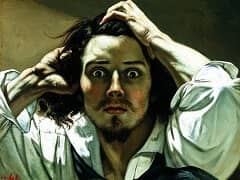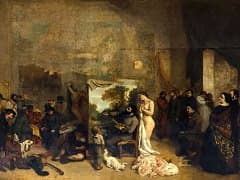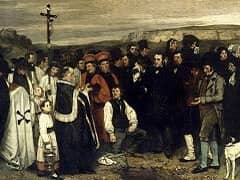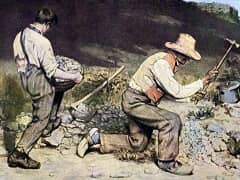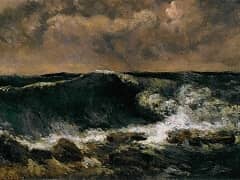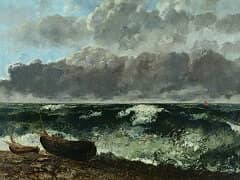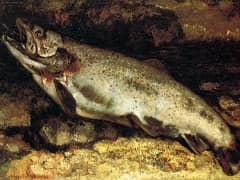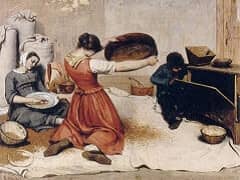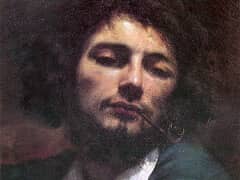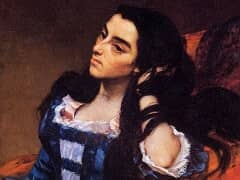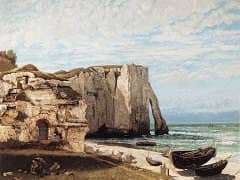The Meeting, 1853 by Gustave Courbet
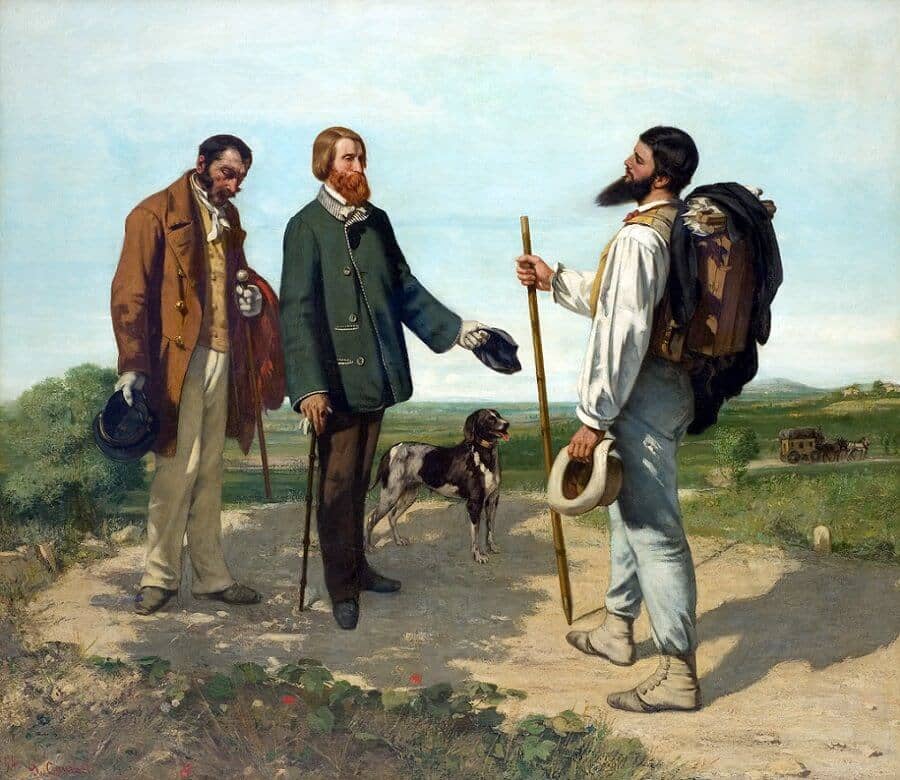
The Meeting is one of the best-known and best-liked of Courbet's paintings. One reason for that, apart from the apparent sociability of the theme, is the high key of the palette and the brilliance of the light. Here the artist is painting from his experience of Mediterranean light, seen on his first trip to the south of France in May of 1854. The occasion was the much anticipated visit, prolonged through September, to the artist's first and most important patron, Alfred Bruyas of Montpellier. Bruyas had first encountered Courbet the year before, when he bought both The Bathers and The Sleeping Spinner from the Salon of 1853. Before the end of 1854 he would have commissioned or bought from the artist seven additional works, which joined his extensive collection of works by contemporary painters, which he had been forming since the mid-1840s.
The Meeting was commissioned and possibly begun in Montpellier, and finished in Ornans. Courbet knew of Bruyas's interest in befriending the artists whose work he collected and he knew that Bruyas wanted from him a painting that would commemorate the relationship between himself and his new patron. He was happy to attempt this out of his enthusiasm for Bruyas and his euphoric belief that here was a man who could help to provide not only a Fourierist solution to the future of modern art and society, but the more specific solution to the problem of Courbet's own career as a painter. To make such a painting - the portrayal of actual persons in order to communicate a larger idea - was in any case perfectly commensurate with his Realist project. The result was a profoundly successful painting, which had the added advantage of pleasing his patron. True to its nature as a "real allegory" rather than an anecdote as was long thought, the painting is not a record of an actual event, Courbet's arrival in Montpellier and greeting by Bruyas and his manservant.
As Philippe Bordes notes, Courbet traveled to the city not by coach but by the new railroad line, and in any event there would have been no occasion for him to be met out in the open countryside. The painting is rather an interpretation of two mutually interested and interdependent characters who represent two different social strata and two different but interrelated roles in society. Bruyas is the gentleman patron, his caste figured in his demeanor and in his manservant, without whom one feels he may not be able to function. This doubled figure faces outward toward the figure of the artist, powerfully erect, tall and striding, carrying his painting box and folding canvases on his back, head high and "Assyrian profile" well on view. One can see why the word vanity sprang to the lips of its first viewers; but one can also see the narrowness of such a response.
The artist who tilts back his head to gaze seriously at his host, aware of his own power to produce what the other wants but also aware of his own need of the other's support, is not a creature of vanity but of pride. The artist, whose role it is to wander the world and have no settled niche in society, is presented as fully equal to, and in some ways stronger than, the man of wealth and social position.

